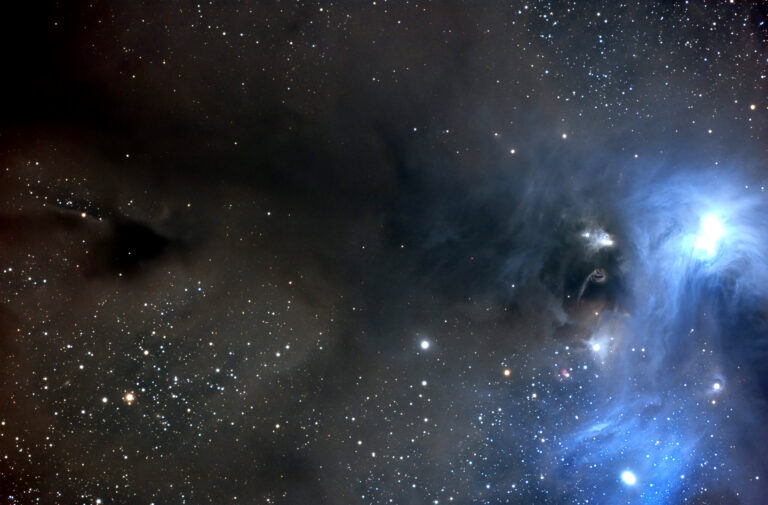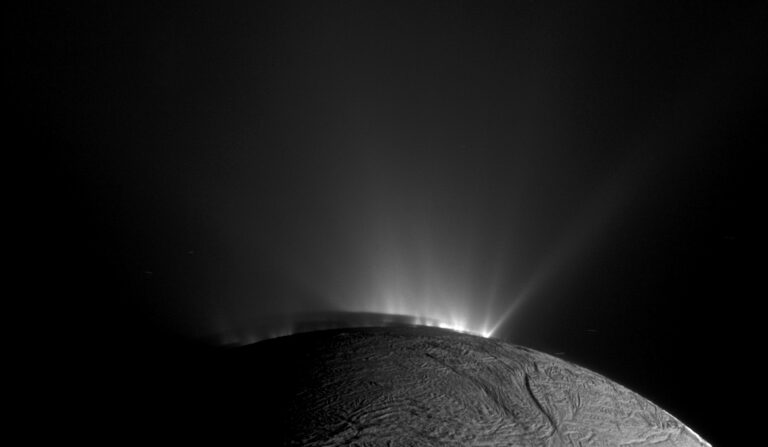Key Takeaways:
Astronomers Nurten Filiz Ak and Niel Brandt from Pennsylvania State University, who led the team, announced their results in a recent paper. The paper describes 19 distant quasars in which giant clouds of gas seemed to disappear in just a few years.
“We know that many quasars have structures of fast-moving gas caught up in quasar winds, and now we know that those structures can regularly disappear from view,” said Ak. “But why is this happening?”
Quasars are powered by gas falling into supermassive black holes at the centers of galaxies. As the gas falls into the black hole, it heats up and gives off light. The gravitational force from the black hole is so strong and is pulling so much gas that the hot gas glows brighter than the entire surrounding galaxy.
But with so much going on in such a small space, not all the gas is able to find its way into the black hole. Much of it escapes, carried along by strong winds blowing out from the center of the quasar.
“These winds blow at thousands of miles per second, far faster than any winds we see on Earth,” said Brandt. “The winds are important because we know that they play an important role in regulating the quasar’s central black hole, as well as star formation in the surrounding galaxy.”
Many quasars show evidence of these winds in their spectra — measurements of the amount of light that the quasar gives off at different wavelengths. Just outside the center of the quasar are clouds of hot gas flowing away from the central black hole. As light from deeper in the quasar passes through these clouds on its way to Earth, some of the light gets absorbed at particular wavelengths corresponding to the elements in the clouds.
As gas clouds are accelerated to high speeds by the quasar, the Doppler effect spreads the absorption over a broad range of wavelengths, leading to a wide valley visible in the spectrum. The width of this “broad absorption line” (BAL) measures the speed of the quasar’s wind. Quasars whose spectra show such broad absorption lines are known as “BAL quasars.”
But the hearts of quasars are chaotic, messy places. Quasar winds blow at thousands of miles per second, and the disk around the central black hole is rotating at speeds that approach the speed of light. All this adds up to an environment that can change quickly.
Previous studies had found a few examples of quasars whose broad absorption lines seemed to have disappeared between one observation and the next. But these quasars had been found one at a time, and largely by chance — no one had ever done a systematic search for them. Undertaking such a search would require measuring spectra for hundreds of quasars, spanning several years.
Enter the Sloan Digital Sky Survey (SDSS). Since 1998, SDSS has been regularly measuring spectra of quasars. Over the past three years, as part of SDSS-III’s Baryon Oscillation Spectroscopic Survey (BOSS), the survey has been specifically seeking repeated spectra of BAL quasars through a program proposed by Brandt and colleagues.
Their persistence paid off. The research team gathered a sample of 582 BAL quasars, each of which had repeat observations over a period of between one and nine years — a sample about 20 times larger than any that had been previously assembled. The team then began to search for changes and was quickly rewarded. In 19 of the quasars, the broad absorption lines had disappeared.
What’s going on here? There are several possible explanations, but the simplest is that in these quasars gas clouds that the scientists had seen previously are literally “gone with the wind” — the rotation of the quasar’s disk and wind have carried the clouds out of the line of sight between us and the quasar.
And because the sample of quasars is so large and had been gathered in such a systematic manner, the team can go beyond simply identifying disappearing gas clouds. “We can quantify this phenomenon,” said Ak.
Finding 19 such quasars out of 582 total indicates that about 3 percent of quasars show disappearing gas clouds over a three-year span, which in turn suggests that a typical quasar cloud spends about a century along our line of sight. “Since the universe is 14 billion years old, we’re used to astronomical phenomena lasting a very long time,” said Pat Hall from York University in Toronto. “It’s fascinating to discover something that changes within a human lifetime.”
Now, as other astronomers come up with models of quasar winds, their models will need to explain this 100-year timescale. As theorists begin to consider the results, the team continues to analyze their sample of quasars — more results are coming soon. “This is really exciting for me,” Ak said. “I’m sitting at my desk, discovering the nature of the most powerful winds in the universe.”
Astronomers Nurten Filiz Ak and Niel Brandt from Pennsylvania State University, who led the team, announced their results in a recent paper. The paper describes 19 distant quasars in which giant clouds of gas seemed to disappear in just a few years.
“We know that many quasars have structures of fast-moving gas caught up in quasar winds, and now we know that those structures can regularly disappear from view,” said Ak. “But why is this happening?”
Quasars are powered by gas falling into supermassive black holes at the centers of galaxies. As the gas falls into the black hole, it heats up and gives off light. The gravitational force from the black hole is so strong and is pulling so much gas that the hot gas glows brighter than the entire surrounding galaxy.
But with so much going on in such a small space, not all the gas is able to find its way into the black hole. Much of it escapes, carried along by strong winds blowing out from the center of the quasar.
“These winds blow at thousands of miles per second, far faster than any winds we see on Earth,” said Brandt. “The winds are important because we know that they play an important role in regulating the quasar’s central black hole, as well as star formation in the surrounding galaxy.”
Many quasars show evidence of these winds in their spectra — measurements of the amount of light that the quasar gives off at different wavelengths. Just outside the center of the quasar are clouds of hot gas flowing away from the central black hole. As light from deeper in the quasar passes through these clouds on its way to Earth, some of the light gets absorbed at particular wavelengths corresponding to the elements in the clouds.
As gas clouds are accelerated to high speeds by the quasar, the Doppler effect spreads the absorption over a broad range of wavelengths, leading to a wide valley visible in the spectrum. The width of this “broad absorption line” (BAL) measures the speed of the quasar’s wind. Quasars whose spectra show such broad absorption lines are known as “BAL quasars.”
But the hearts of quasars are chaotic, messy places. Quasar winds blow at thousands of miles per second, and the disk around the central black hole is rotating at speeds that approach the speed of light. All this adds up to an environment that can change quickly.
Previous studies had found a few examples of quasars whose broad absorption lines seemed to have disappeared between one observation and the next. But these quasars had been found one at a time, and largely by chance — no one had ever done a systematic search for them. Undertaking such a search would require measuring spectra for hundreds of quasars, spanning several years.
Enter the Sloan Digital Sky Survey (SDSS). Since 1998, SDSS has been regularly measuring spectra of quasars. Over the past three years, as part of SDSS-III’s Baryon Oscillation Spectroscopic Survey (BOSS), the survey has been specifically seeking repeated spectra of BAL quasars through a program proposed by Brandt and colleagues.
Their persistence paid off. The research team gathered a sample of 582 BAL quasars, each of which had repeat observations over a period of between one and nine years — a sample about 20 times larger than any that had been previously assembled. The team then began to search for changes and was quickly rewarded. In 19 of the quasars, the broad absorption lines had disappeared.
What’s going on here? There are several possible explanations, but the simplest is that in these quasars gas clouds that the scientists had seen previously are literally “gone with the wind” — the rotation of the quasar’s disk and wind have carried the clouds out of the line of sight between us and the quasar.
And because the sample of quasars is so large and had been gathered in such a systematic manner, the team can go beyond simply identifying disappearing gas clouds. “We can quantify this phenomenon,” said Ak.
Finding 19 such quasars out of 582 total indicates that about 3 percent of quasars show disappearing gas clouds over a three-year span, which in turn suggests that a typical quasar cloud spends about a century along our line of sight. “Since the universe is 14 billion years old, we’re used to astronomical phenomena lasting a very long time,” said Pat Hall from York University in Toronto. “It’s fascinating to discover something that changes within a human lifetime.”
Now, as other astronomers come up with models of quasar winds, their models will need to explain this 100-year timescale. As theorists begin to consider the results, the team continues to analyze their sample of quasars — more results are coming soon. “This is really exciting for me,” Ak said. “I’m sitting at my desk, discovering the nature of the most powerful winds in the universe.”










